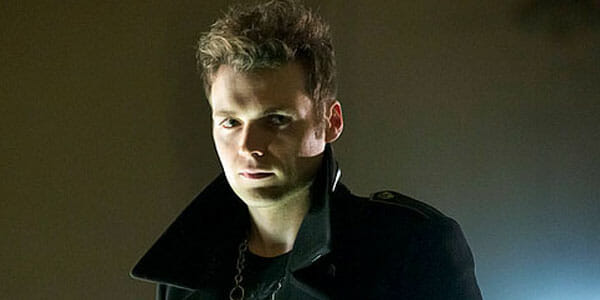
If “State v. Queen “ could have a subtitle it would no doubt be “you can’t handle the truth.” After being built up for six episodes, we finally see Moira Queen on trial for her alleged role in Malcolm Merlyn’s Glades massacre. At first blush, this courtroom drama looks to be the centerpiece of the episode. Instead, in true Arrow fashion, it serves as merely the catalyst for the revelation of some much deeper, darker truths. The result is a somewhat overstuffed but ultimately winning new entry into the show’s ever-expanding universe.
Naturally, as Moira’s trial heats up, Oliver and his team find themselves facing a more heightened, citywide threat. Count Vertigo, that flamboyant drug dealer that Oliver defeated back in the season one episode “Vertigo” is back with a vengeance. Escaping prison in the wake of the Glades quake—he is also shown releasing the Dollmaker from “Broken Dolls”—Vertigo begins poisoning various people in Starling City with his self-named psychedelic drug of choice. Among those afflicted are Diggle and district attorney Adam Donner (Dylan Bruce), Laurel’s boss and the leading prosecutor at Moira’s trial. Moreover, the madman promptly takes Donner hostage.
Played with great gusto by Fringe’s Seth Gabel, the Count’s appearance last season characterized him as a ruthless dealer prone to theatrics. Now, driven insane by an overdose of Vertigo that Oliver administered during their previous encounter, the character has basically become a live action version of the Joker from Batman: The Animated Series—both in action and cadence. (There’s unmistakably a bit of Mark Hamill in Gabel’s delivery.) In addition, to add to the growing list of Christopher Nolan/Batman parallels, the Count even transmits a live recording of him tormenting Donner while cackling like a maniac (à la Heath Ledger in The Dark Knight). The problem is, though Gabel embraces his role with demented glee, the Count often appears to be all talk and no bark. Whereas a villain like the Joker continually displays a similar brand of twisted humor, one can nevertheless detect a palpable sense of menace and danger permeating even the corniest of his jokes.
Ultimately, the Count’s return feels like little more than as a device for a moral conundrum. Here’s a man who Oliver had the chance to kill but didn’t. Now, because of this decision, people close to our hero are being hurt. In the end, when Felicity is threatened in the episode’s climatic battle scene, Oliver is forced to skewer Count Vertigo with his arrow, sending the villain tumbling to his death. Considering that Oliver has only been sticking to this “no kill” philosophy for five episodes, the impact of him breaking it maybe does not hit as hard as it should. That said, kudos to the writers—co-creator Marc Guggenheim and former Buffy writer Drew Z. Greenberg are credited this time around—for actually having Oliver unambiguously go through with the kill rather than pulling the cheap trick of having someone or something else do it for him.
But back to the trial plotline, Laurel Lance, filling in for an incapacitated Adam, discovers the prosecution’s smoking gun: Moira carried on an affair with Malcolm Merlyn many years ago. An emotionally conflicted Laurel must then press forward with the evidence, despite her reservations about it destroying the Queen family. Not that it ultimately matters much since, in a move that baffles all involved, Moira is found not guilty on all counts.
Laurel’s involvement in the trial further highlights a plot point that’s been bothering me since the season premiere. I know the writers are trying to rope the character into the main fabric of the show, but, seriously, how is her seat on the prosecution table not the very definition of conflict of interest? Not only does she have a well-established relationship with the Queen family, but she even dated Malcolm’s son just prior to the Glades incident. Even in a comic book world, this would never fly.
But, I’m burying the lede here. While I knew all would not be wine and roses for the newly acquitted Moira Queen, I certainly wasn’t prepared for the revelation of Malcolm Merlyn, alive and as snappily dressed as always. Just to twist this “oh snap!” moment even further, Malcolm then reveals that daughter Thea may very likely have been the result of his and Moira’s brief union. Assuming he’s telling the truth, this makes Thea’s attraction to Tommy during the first half of season one very, very icky in retrospect.
Once again, just when I think the Arrow writers are fixing to rest on their laurels, they pull out jaw-dropping revelations like this. While such soap opera-level twists and turns may alienate some viewers, it’s precisely the kind of juicy, go-for-broke storytelling that makes the show such a joy.
Going forward, my only concern is that the Arrow team is juggling more than they can handle. Seven episodes in and we’ve gotten Ra’s al Ghul and his League of Assassins, the introduction of Black Canary, the nefarious yet enigmatic H.I.V.E., Sebastian Blood, Cyrus Gold (who appears in a brief cameo towards the episode’s end) and now the resurrection of Malcolm and the reveal of Thea’s true parentage. Not to mention all the hoopla going on in the Island flashbacks (that seemingly innocuous arrowhead now apparently holds coordinate for a submarine capable of “saving humanity”) or that next week we get our official introduction of the Flash.
Just when I think I have an Arrow’s season arc figured out, more and more layers are added with each installment. It’s a house of cards, for sure. Let’s hope the show’s creative team has steady hands.